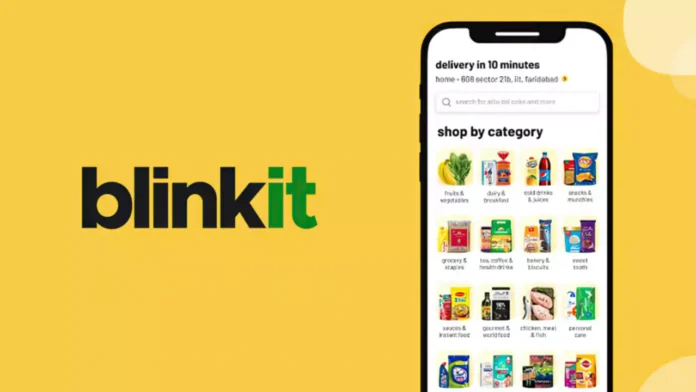Zomato may soon encounter competition from ecommerce giants such as Amazon and Flipkart as it delves into expanding its 10-minute delivery service, Blinkit, to include a diverse range of brands across various categories. This ambitious move into the rapidly expanding direct-to-consumer (D2C) market involves Zomato establishing its own supply chain to procure branded products directly and handle inventory. Multiple sources familiar with the company’s plans revealed that Zomato intends to deliver these products through Blinkit.
Zomato, currently expanding its quick commerce operations, has engaged in discussions with individual brand owners across various categories to increase inventory. This initiative is being viewed as a potential driver for long-term growth, according to one source.
This wouldn’t entail direct ownership of inventory by the company. Instead, it would involve overseeing the product flow for D2C brands, akin to how marketplaces operate.
Zomato declined to comment on queries.
As part of its strategy, the Deepinder Goyal-led firm has attempted to acquire and merge with Shiprocket at least twice, according to another individual briefed on the discussions. However, Shiprocket, which collaborates with many D2C brands, did not agree to the proposal.
During Shiprocket’s $185-million round in 2021, Zomato acquired a stake in the company, and as per Tracxn, it presently possesses a 6.6% share in the logistics provider.
As of press time, queries directed to Shiprocket have gone unanswered.
As discussions between the two parties progress, Zomato has leased one warehouse each in New Delhi and Mumbai to bolster Blinkit’s ecommerce initiative.
Apart from its largest segment, food delivery, and quick commerce, Zomato also operates in the business-to-business grocery supply sector through Hyperpure. Additionally, it has a presence in the going-out segment with an event ticketing vertical known as Zomaland, as well as a dining out vertical.
Continue Exploring: Zomato’s B2B vertical Hyperpure sees exponential growth in Q3 FY24, revenue inches closer to INR 1,000 Cr
Recently, with growth slowing in its core business, analysts have started viewing Blinkit as the next major growth opportunity for Zomato.
“New-age D2C brands in categories like home needs, small electronics, beauty and personal care are looking at quick commerce as a growing channel for sales,” said an industry watcher. “Blinkit has a strong footing there. Now, Zomato wants to set up a backend structure, where it would work directly with brands and help them sell on Blinkit. With this, the company gets greater control over its supply chain.”
Continue Exploring: Zomato’s strong Q3 performance spurs brokerage firms to boost price targets; Blinkit expansion drives optimism
Zomato and Swiggy, India’s leading food delivery platforms, have been exploring diversification strategies. In a similar vein, Swiggy introduced its ecommerce marketplace, Minis, last year. Minis emphasizes local delivery of various brands across sectors and notably operates with zero marketplace fees.
Zomato aims to leverage hyperlocal warehouses and expedited delivery schedules to gain a competitive edge. With Blinkit, it intends to challenge established players like Flipkart, owned by Walmart, and Amazon.
For Blinkit, expanding into new categories, particularly within the D2C realm, is a strategic move aimed at increasing its average order value (AOV). This metric has been instrumental in driving the company’s revenue growth by minimizing losses. In the December quarter, Blinkit’s AOV reached INR 635, up from INR 553 the previous year and INR 607 in the September quarter.
Continue Exploring: Blinkit continues growth trajectory with second consecutive quarter of positive contribution
Margins could have been more robust if it weren’t for the slim profit margins that most grocery businesses operate on.
“For a large part, entry into newer categories has been responsible…for the increase in Blinkit’s AOV…but the company hasn’t given out details on its product mix,” said a Mumbai-based consumer sector analyst. “Typically, grocery products are less accretive on margins, so it’s likely that profitability is also improving on account of higher (share in the) mix (of) products such as consumer electronics, beauty and personal care, etc.”
Flipkart has unveiled same-day delivery services across 20 cities for various products. While ecommerce companies aren’t directly competing in the grocery sector, they are consistently reducing delivery times in response to heightened competition from quick commerce firms, particularly for specific products.
Continue Exploring: Flipkart revives same-day delivery service across 20 cities, taking on Amazon’s Prime model
The analyst also highlighted Blinkit’s tactic of leveraging events and occasions such as popular cricket matches, festivals, New Year’s Eve, and holidays.
“Through these occasions, Blinkit is marketed as a larger platform for D2C products and brands…the items move quickly through inventory and turn in higher margins in rupee value terms than groceries and FMCG,” he said.
Blinkit has been offering occasional items with lower price tags, such as flowers, earthen lamps, and stuffed toys, alongside high-value goods like top-end smartphones.





